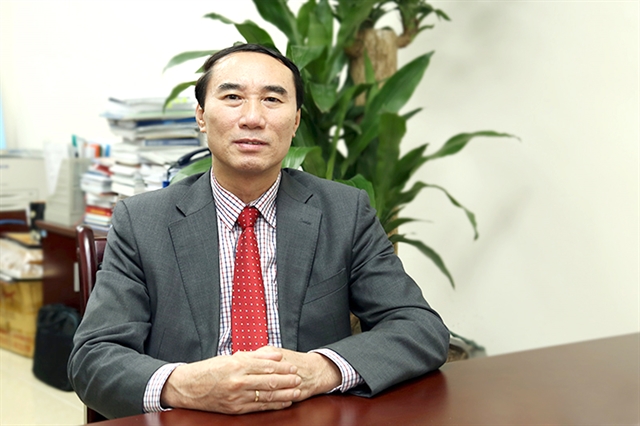 Economy
Economy

Nguyễn Văn Phụng, director of the Department of Tax Administration at Large Enterprises from the General Department of Taxation, spoke with Viet Nam News about incentive tax policies for Indian corporations investing in the Vietnamese pharmaceutical industry

|
| Nguyễn Văn Phụng, director of the Department of Tax Administration at Large Enterprises from the General Department of Taxation. |
Nguyễn Văn Phụng, director of the Department of Tax Administration at Large Enterprises from the General Department of Taxation, spoke with Việt Nam News about incentive tax policies for Indian corporations investing in the Vietnamese pharmaceutical industry
How has the bilateral trade relationship, especially in the pharmaceutical industry, between India and Việt Nam developed?
The bilateral trade relationship between India and Việt Nam in recent years has grown quite steadily and developed continuously. For India, Việt Nam is the 18th-largest trading partner globally and within ASEAN, the fourth-largest trading partner after Singapore, Indonesia and Malaysia. For Việt Nam, India is a major trading partner among 10 important partners, is the seventh-largest source of imports and the ninth-largest export market globally.
India imports from Việt Nam all kinds of equipment, machinery, electronics, iron and steel, and chemicals. Meanwhile, Việt Nam imports from India many cotton products, raw materials for the textile and garment industry and raw materials for the agricultural processing industry, animal feed and pharmaceuticals.
Regarding trade and investment relations between Việt Nam and India in pharmaceuticals and medical equipment, according to the embassy of India, India has been one of the largest exporters of pharmaceutical products to Việt Nam in recent years. With cheaper prices than sources from Europe and the US, imported pharmaceutical products from India are very important in stabilising prices for imported pharmaceutical products.
India is currently the third-largest supplier of Việt Nam, after France and Germany, in the pharmaceutical sector, with imports in the first nine months of 2020 reaching US$198 million. The demand for pharmaceutical products in Việt Nam is increasing and on average each Vietnamese person spends $64 per year on medicine. New regulations coming into effect and the signing of a series of free trade agreements (FTAs) by Việt Nam have brought both opportunities and challenges for Indian pharmaceutical companies.
Local newspapers have reported that Việt Nam and India have much potential to promote investment co-operation in the pharmaceutical and medical equipment industries and Việt Nam is seeking investment in the development of pharmaceutical products.
Therefore, the room for co-operation and investment in the pharmaceutical and medical equipment industry between Việt Nam and India is very large.
Currently, there are many Indian enterprises in pharmaceuticals and medical equipment interested in and looking for opportunities for co-operation and investment in Việt Nam, which is known as a new potential destination for capital. Foreign direct investment (FDI) in the post-pandemic context with open policies, a large open economy with import-export turnover in 2019 at nearly 200 per cent of GDP are among the attractions.
Việt Nam's business investment conditions in recent years have improved positively, local labour productivity has also increased rapidly and most of all, the Government of Việt Nam pays great attention to health development. Most important, Việt Nam also has a rich source of natural medicinal herbs, which will be a favourable condition for enterprises to invest in the production of medicinal herbs to exploit and improve their competitiveness with pharmaceuticals of other countries.
What are the benefits for Indian pharmaceutical businesses in Việt Nam?
There are roadmaps for tax incentives under FTAs and the Free Trade Agreement between ASEAN and India (AIFTA). By the end of 2020, Việt Nam had participated in or was negotiating 20 FTAs
In the AIFTA framework, the ASEAN Trade in Goods Agreement (ATIGA) establishes a tariff reduction roadmap between ASEAN and India, it also includes rules of origin, dispute resolution mechanisms, non-tariff measures, policy transparency, review and revision of commitments, trade remedies and exceptions. According to AITIG, ASEAN members and India have agreed to open their respective markets by gradually reducing and eliminating 80 per cent of tariff lines, accounting for 75 per cent of transactions.
Regarding tax rates for the pharmaceutical industry, Việt Nam's import tariffs on pharmaceuticals are usually lower than those for conventional goods, for example, with an average MFN tariff of 14 per cent by 2020, the tax rate for pharmaceutical products will be in the range of 0 per cent to 8 per cent. According to the AIFTA, pharmaceutical products from India to Việt Nam will be at lower rate from 0 per cent to 6 per cent.
What are the tax incentives for attracting foreign investment in Việt Nam?
In recent years, Việt Nam has simplified tax incentives to attract investment without discrimination among economic sectors, among treaty investors and foreign investors.
Currently, the Law on Investment and the Law on Corporate Income Tax (CIT) only gives incentives to some areas that need to be encouraged and some areas that are interested in attracting investment with three preferential levels.
The highest incentive tax package which CIT rate is 10 per cent in the 15 years after the project goes into operation, the tax exemption for four years from the year of creating profit and tax reduction up to 50 per cent in less than nine years applies to new investment projects invested in regions with extremely difficult socio-economic conditions, in economic zones and high technology zones. — VNS

.jpg)







